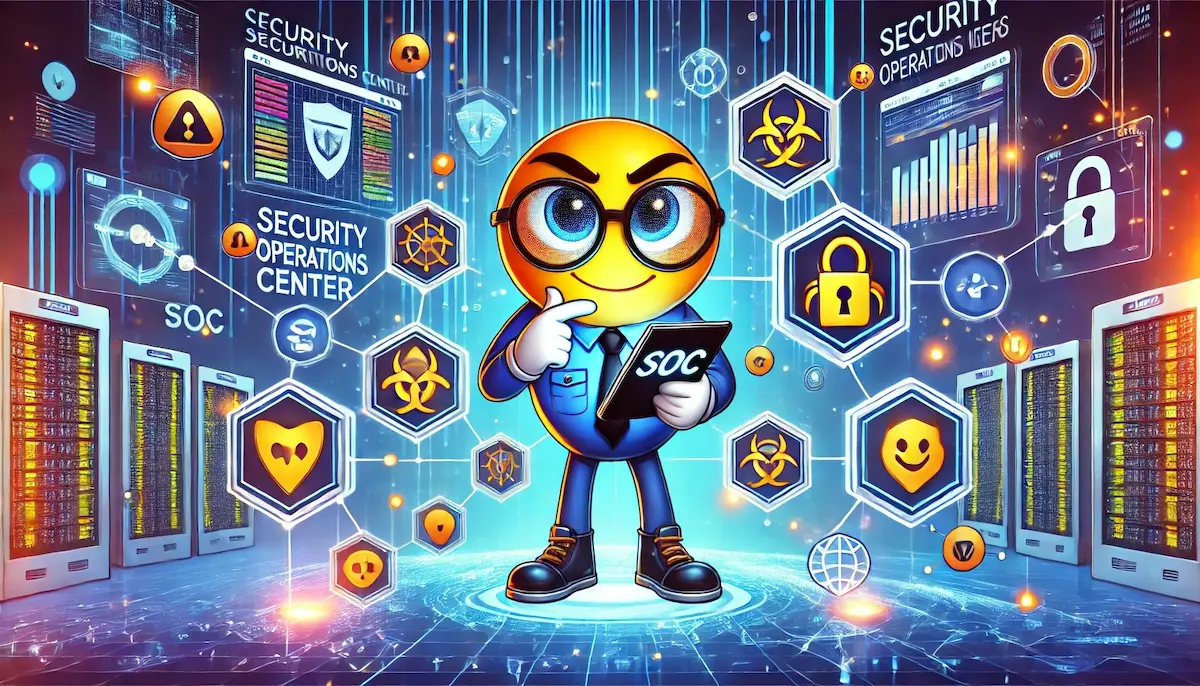A Security Operations Center (SOC) is a centralized unit that monitors, detects, analyzes, and responds to cybersecurity incidents in real-time. The SOC is the heart of an organization’s cybersecurity strategy, acting as the first line of defense against cyber threats. By leveraging advanced technologies and skilled personnel, a SOC ensures the continuous protection of an organization’s IT infrastructure and sensitive data.
Origins and Importance
The concept of a SOC originated from the need for a dedicated team and infrastructure to handle the increasing volume and complexity of cyber threats. As organizations began to adopt more sophisticated IT systems and cyber threats evolved in complexity, it became clear that traditional IT teams were not enough to protect against these threats. The SOC was developed as a specialized unit focused solely on cybersecurity, with the tools and expertise necessary to handle advanced threats.
A SOC is crucial because it provides a centralized approach to managing and mitigating cyber risks. By continuously monitoring an organization’s digital environment, the SOC can quickly detect and respond to threats, reducing the potential impact of security incidents. This proactive stance is essential in the modern threat landscape, where cyberattacks can occur at any time and have devastating consequences.
Key Characteristics
- Continuous Monitoring: SOCs operate 24/7, continuously monitoring networks, systems, and applications for signs of malicious activity. This ensures that threats are detected as soon as they arise.
- Incident Detection and Response: The SOC is responsible for detecting, analyzing, and responding to security incidents. This involves identifying threats, assessing their severity, and implementing measures to contain and mitigate them.
- Threat Intelligence: SOCs leverage threat intelligence to stay informed about the latest cyber threats and vulnerabilities. This information helps them anticipate and prepare for potential attacks.
- Advanced Technologies: SOCs use a range of advanced security technologies, including Security Information and Event Management (SIEM) systems, intrusion detection systems (IDS), and threat intelligence platforms, to detect and respond to threats.
- Skilled Personnel: A SOC is staffed by a team of cybersecurity professionals, including analysts, incident responders, and threat hunters. These experts possess the knowledge and skills required to handle complex security challenges.
Benefits of a SOC
Implementing a SOC offers several significant benefits:
- Enhanced Security: Continuous monitoring and rapid incident response improve an organization’s overall security posture, reducing the risk of data breaches and other cyber incidents.
- Improved Detection and Response: A SOC’s ability to quickly detect and respond to threats minimizes the impact of security incidents, protecting critical assets and maintaining business continuity.
- Centralized Management: A SOC provides a centralized approach to managing security operations, ensuring consistency and coordination across the organization.
- Regulatory Compliance: Many regulatory frameworks require organizations to have robust security measures in place. A SOC helps ensure compliance by providing comprehensive security monitoring and reporting.
- Proactive Threat Hunting: SOC teams actively search for hidden threats within the network, identifying and addressing vulnerabilities before they can be exploited by attackers.
Components of a SOC
A SOC typically includes several key components:
- Security Monitoring Tools: These tools, such as SIEM systems, collect and analyze security data from across the organization’s IT infrastructure.
- Incident Response Plan: A documented plan outlines the procedures for responding to security incidents, ensuring a swift and effective response.
- Threat Intelligence Feeds: These feeds provide real-time information about emerging threats and vulnerabilities, helping the SOC stay ahead of potential attacks.
- Security Policies and Procedures: Established policies and procedures guide the SOC’s operations and ensure consistent and effective security practices.
- Training and Awareness Programs: Continuous training for SOC staff and awareness programs for the broader organization help maintain a strong security culture.
Challenges and Considerations
While SOCs offer numerous benefits, there are challenges to consider:
- Resource Intensive: Building and maintaining a SOC requires significant investment in technology, personnel, and training.
- Alert Overload: SOCs can be inundated with security alerts, many of which may be false positives. Effective management and prioritization of alerts are crucial.
- Evolving Threat Landscape: The constantly changing nature of cyber threats requires SOCs to continuously adapt and update their tools and strategies.
- Talent Shortage: There is a high demand for skilled cybersecurity professionals, making it challenging to recruit and retain qualified SOC staff.
Conclusion
A Security Operations Center (SOC) is a vital component of an organization’s cybersecurity strategy. By providing continuous monitoring, rapid incident detection and response, and leveraging advanced technologies and skilled personnel, a SOC enhances an organization’s ability to protect against cyber threats. Despite the challenges associated with implementing and maintaining a SOC, the benefits it offers in terms of improved security, regulatory compliance, and threat mitigation make it an essential investment for any organization.
Blockfine thanks you for reading and hopes you found this article helpful.
